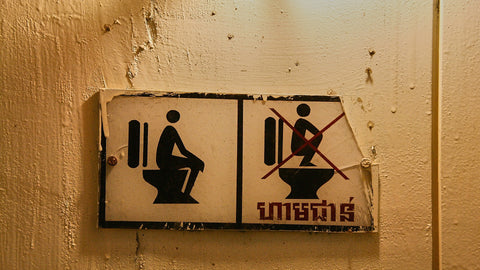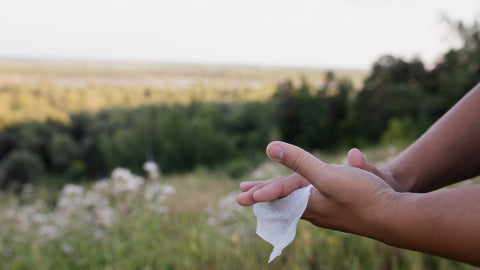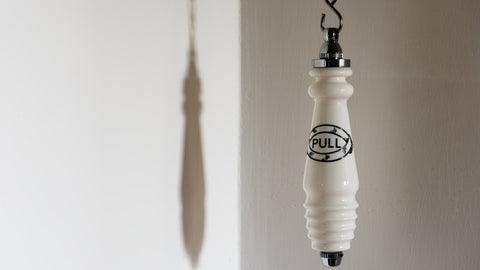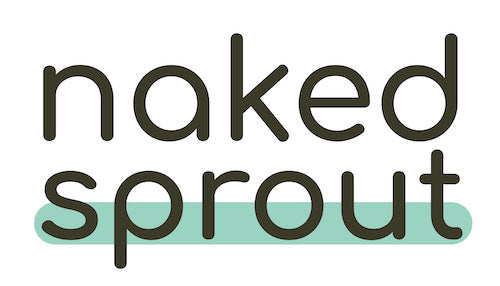The Toilet Paper Divide: Binning or Flushing?

Buckle up tissue fans - today we’re off on a thrilling tour of the world. Are we going to experience marvellous cultural wonders and sample exotic cuisines?
No! We’re checking out the loos.
Going to the toilet is a universal fact of being human, but the way our toilet habits are arranged differs from country to country, depending on culture, infrastructure capabilities, and environmental considerations.
Today, we’re looking at what happens to toilet tissue after it’s been used. While flushing is the norm here in the UK, other countries throw it in the bin. So who does what, why the difference, and is it better to flush or bin toilet roll? Grab your passport, your toilet roll, and let’s take a trip!

Binning
Our first stop is Greece, home of the alphabet, democracy, and small bins beside toilets.
Why the bins? The country's plumbing system, like those in many parts of the world, isn't designed to handle flushed toilet paper. The standard pipe used in Greek plumbing is simply too narrow to accommodate clumps of tissue, so unsuspecting flushers would risk creating clogs and backups in the system.
This was a concern during the build-up to the 2004 Olympic games in Athens. With athletes arriving from countries all over the world, and 1.4 million visitors expected, some businesses posted warnings to visitors that toilet tissue shouldn’t be flushed.
Instead, used toilet roll is generally placed in a small bin that’s lined with a plastic bag and regularly changed. The same is true in many parts of the world including Egypt, Turkey, and parts of South America, and Southeast Asia. In countries where plumbing is older, more narrow or sewerage systems are more patchy in their coverage it’s a pragmatic response to infrastructural constraints.

Flushing
In contrast, journey to Japan, and you'll find a high-tech paradise for toilet enthusiasts. Japanese toilets don’t just accept toilet paper, 81% of Japanese homes have combined bidet-toilets that reduce the need for paper in the first place. If you’re very lucky you might even get a self-cleaning toilet, or one with an inbuilt deodorising system!
Toilets in the UK, most of Western Europe, and the United States are generally less packed with features, but flushing toilet paper is the norm, supported by sewage systems designed to handle the paper's breakdown. Here in the UK the development of modern plumbing in the Victorian era was accompanied by the development of commercial toilet paper, and so each is designed to account for the other, and any toilet that can’t manage toilet tissue will generally be clearly marked.

Mixed approaches
So far we’ve looked at places where you should flush, and places where you shouldn’t, but broad strokes like this can obscure the fact that people in most countries will adopt mixed approaches depending on the local infrastructure.
In South Korea, for example, toilet paper has generally been thrown in the bin, but advancements in sewage treatment technology have begun to change norms, with more people flushing toilet paper, a move supported by government campaigns.
What about popular holiday destinations? Using a bin is common in rural parts of Spain and Cyprus, but if you’re visiting a city or staying in a hotel it’s likely the plumbing can handle it; if there’s likely to be you’ll often see signage to tell you what to do.
If in any doubt it’s best to ask a friendly local or your host. It might be a bit embarrassing for those of us from the UK, but the good news is, like flushing habits themselves, squeamishness about lavatorial matters is far from universal. Many people won’t bat an eyelid, and asking is definitely better manners than causing a block!

And What’s Best for the Planet?
That’s a quick guide to the places where you should bin, places where you should flush, and places where you should ask. But we’re interested in the environmental impact of toilet tissue here at Naked Sprout, so is flushing or binning toilet paper better for the environment?
In countries where flushing is the norm, toilet paper will generally have disintegrated enough by the time it reaches the treatment plant to be broken down into “sludge,” along with the other solid matter that’s normally flushed! This can then be made into compost, some water companies will even use this sludge to generate renewable energy.
Conversely, in regions with limited water or older plumbing, binning - paired with responsible waste management - will take less toll on water supplies and plumbing infrastructure, and is less likely to result in hazardous blockages and leaks.

The Final Flush
That’s the end of this whistle-stop world tour of toilets!
When it comes to cultural norms, environmental impact, and infrastructural considerations there’s no one-size fits all solution to the question of what you should do with used toilet paper; the best and most pragmatic approach will usually be what the people living there are doing already.
So what’s our final advice? When in Rome, go to the loo as the Romans do!*
And if you’re thinking of an upgrade to your toilet routine at home, might we suggest some unbleached toilet roll manufactured in a pioneering B Corp tissue mill?




